Radiata pine is a softwood whose availability and ease of use make it popular for all kinds of construction and decorative uses.
Monterey Pine, Insignis Pine
Pinus radiata
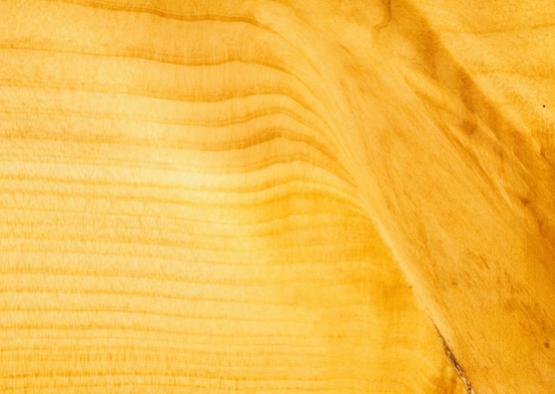
Radiata pine is native to the central coast of California but is widely planted in Australia and New Zealand. It makes up 28% of Tasmania’s timber plantations and is popular in all types of construction and decorative uses. These include framing, lining, glue laminated beams, veneer and plywood. It can be used for many exposed structural and non-structural applications if it is treated with the right preservatives.
The texture of radiata pine is fine, but uneven, and knots are common. The timber is fairly soft and has a low density, often with very wide annual growth rings. The sapwood is white to pale yellow, but often indistinguishable from the heartwood, which is light brown to yellow. The grain is usually straight, apart from a central core of 100mm, which can twist if the moisture content of the timber changes.
Radiata pine is easy to work, apart from the knots, and it readily accepts preservatives. Timber that is high in resin can be hard to glue and the resin may mar painted and stained exteriors. It does not cause staining of alkaloid surfaces such as fibre-cement and concrete.
Radiata pine is not resistant to termites. It can be preservative treated to increase its durability.
Shrinkage
| Very Low | Low | Medium | High | Very High | |
|---|---|---|---|---|---|

|

|
||||
Tangential : |
5.00%
|
||||
Radial : |
3.00%
|
||||
Unit Movement Tangential: |
0.27%
|
||||
Unit Movement Radial: |
0.20%
|
Strength Group

Very High |
High |
Reasonably High |
Medium High |
Medium |
Reasonably Low |
Low |
Very Low |
||
Unseasoned: |
S1 |
S2 |
S3 |
S4 |
S5 |
S6 |
S7 |
S8 |
|
|---|---|---|---|---|---|---|---|---|---|
 |
|||||||||
Seasoned: |
SD1 |
SD2 |
SD3 |
SD4 |
SD5 |
SD6 |
SD7 |
SD8 |
|
 |
Stress Grade

| Structural No. 1 |
Structural No. 2 |
Structural No. 3 |
Structural No. 4 |
Structural No. 5 |
|
Unseasoned: |
F8 |
F7 |
F5 |
F4 |
|
Seasoned: |
F14 |
F11 |
F8 |
F7 |
F5 |
Density per Standard

Seasoned: |
550kg/m3
|
|---|---|
Unseasoned: |
800kg/m3
|
Joint Group

Very High |
High |
Reasonably High |
Medium |
Low |
Very Low |
|
Unseasoned: |
J1 |
J2 |
J3 |
J4 |
J5 |
J6 |
|---|---|---|---|---|---|---|
 |
||||||
Seasoned: |
JD1 |
JD2 |
JD3 |
JD4 |
JD5 |
JD6 |
 |
Colour

| White, yellow, pale straw to light brown | Pink to pink brown | Light to dark red | Brown, chocolate, mottled or streaky | |
 |
||||
Mechanical Properties
Modulus of Rupture - Unseasoned: |
42
|
|---|---|
Modulus of Rupture - Seasoned: |
81
|
Modulus of Elasticity - Unseasoned: |
8
|
Modulus of Elasticity - Seasoned: |
10
|
Maximum Crushing Strength - Unseasoned:  |
19
|
Maximum Crushing Strength - Seasoned: |
42
|
Impact - Unseasoned: |
12
|
Impact - Seasoned: |
6.9
|
Toughness - Unseasoned: |
Medium - 15 - 24 Nm
|
Toughness - Seasoned: |
Low - up to 15 Nm
|
Hardness - Unseasoned: |
2.1
|
Hardness - Seasoned: |
3.3
|
Durability
| Low | Moderate | Reasonably High | High | |
| (0 - 5 yrs) | (5 - 15 yrs) | (15 - 25 yrs) | (more than 25 yrs) | |
In-Ground: |
 |
|||
| (0 - 7 yrs) | (7 - 15 yrs) | (15 - 40 yrs) | (More than 40 yrs) | |
Above ground: |
 |
|||
| (0 - 20 yrs, usually < 5) | (21 - 40 yrs) | (41 - 64 yrs) | (More than 60 yrs) | |
Marine Borer Resistance: |
 |
Lyctid Borer Susceptibility: |
Not Susceptible |
|---|---|
Lyctid Borer Susceptibility - Other: |
|
Termite Resistance: |
Not Resistant
|
Fire Properties
| 0 | 1 | 2 | 3 | 4 | 5 | 6 | 7 | 8 | 9 | 10 | 11 | 12 | 13 | 14 | 15 | 16 | 17 | 18 | 19 | 20 | |
EFH Ignitibility: |
| 0 | 1 | 2 | 3 | 4 | 5 | 6 | 7 | 8 | 9 | 10 | |
EFH Spread-of-Flame Index: |
|||||||||||
EFH Smoke-Developed Index: |
Critical Radiance Flux - Lower: |
>2.2 and <4.5; same for ply ≥17mm |
|---|---|
Critical Radiance Flux - Higher: |
>2.2 and <4.5; same for ply ≥17mm |
Smoke Development Rate: |
<750; the same for ply ≥17mm
|
| 1 - non-combustible | 2 - reasonably non-combustible | 3 - slightly combustible | 4 - combustible | |
Fire Properties Group |
Group Number - Other: |
3 (same for plywood ≥6mm)
|
|---|---|
Average Specific Extinction Area: |
<250
|
Bushfire Resistance: |
BAL 12.5 and 19 - All AS 3959 Required Applications
|
Radiata pine's sapwood is white to pale yellow, but often indistinguishable from the heartwood, which is light brown to yellow. The grain is usually straight, apart from a central core of 100mm, which can twist if the moisture content of the timber changes. The texture of radiata pine is fine, but uneven, and knots are common. The timber is fairly soft and has a low density, often with very wide annual growth rings.
Radiata pine plantations are set to become the main source of timber in Australia. Radiata pine can be used in a wide range of applications, including as a domestic and commercial structural timber, flooring, lining, furniture, panels (such as veneer, plywood, particleboard, fibreboard), corestock, brushware, turnery, toys, poles, posts, sleepers, mining timbers (treated), landscaping, pulp and paper.
Radiata pine is easy to work except for the knots, and it nails satisfactorily. Apart from the core, it is easy to dry, and because it dries quickly, it is usually kiln dried directly from being green. During the warmer months it is very susceptible to bluestain. There can be problems with timber that is high in resin content: it can be hard to glue, and knots, resin streaks and latewood can emit enough resin to mar exterior coatings. Timber that is high in resin should be used for structural purposes only. It is not suitable for steam bending as it is hard to obtain a smooth curve. It readily accepts preservatives, which provide protection to Hazard level 6 (the highest level).
Radiata pine can be prone to surface checking when exposed uncoated to the weather or when coated only with stain-type finishes, which are less protective against moisture penetration.
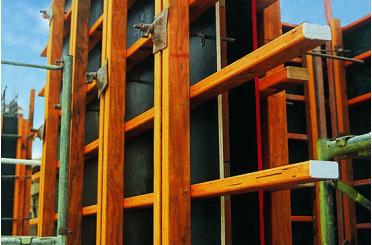
Temporary Structures
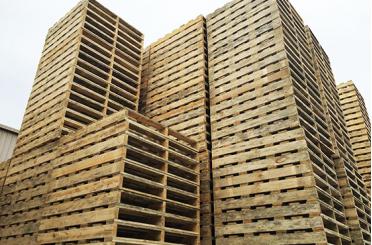
Packaging
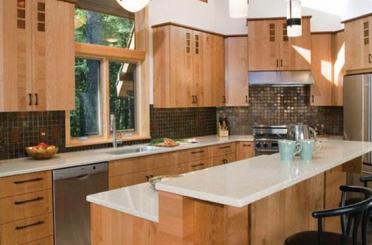
Joinery
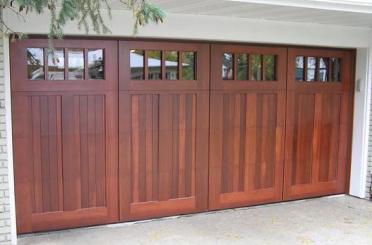
Doors
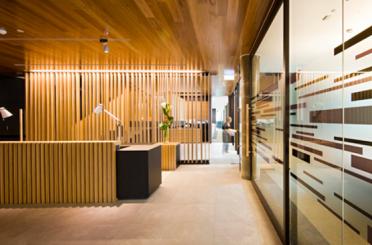
Panelling, Interior
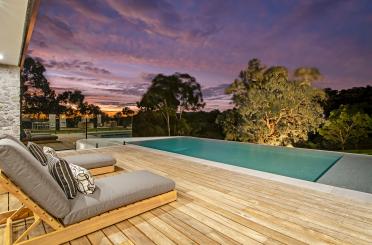
Decking
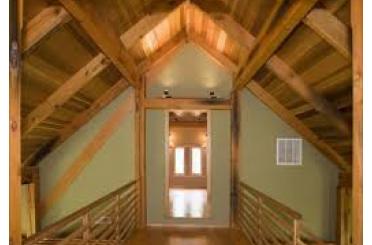
Architectural Roof Trusses
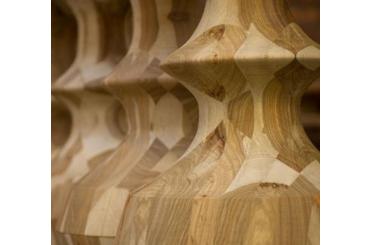
Mouldings
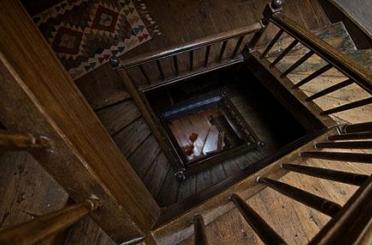
Rails and Balustrades, Interior
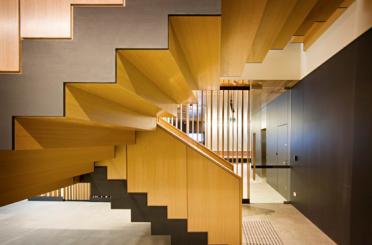
Stairs, Interior
Framing

Flooring

A. Lewis & Co. PTY LTD
Allied Forest Products

Allmat Timber

ATS Building Products
Austim Pty Ltd
Australian Timber

BAYWOOD

Briggs Veneers Pty Ltd

Creative Timber World
Dekhar Outdoors

Forest Strategy Pty Ltd
Franz Building Supplies

Garde Timber Pty Ltd
Hammersmith

Heritage Fencing

HESS TIMBER GmbH

Hyne Timber

ITI (Australia)

Matilda Veneer
MRG Connections

One Stop Pine Penrith

Outlast Timber Supplies

Porta

Ridgewood Timber Pty Ltd

Simmonds
T-Pac Lumber Pty Ltd










